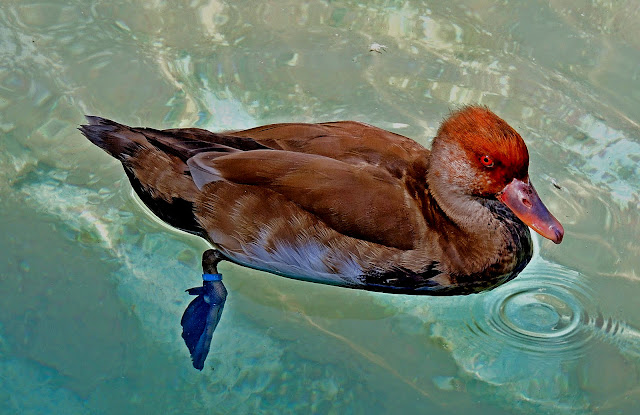This Blog contains Wildlife and Bird Photos from Walks, Safaris, Birding Trips and Vacations. Most of the pictures have been taken with my Nikon P900 and P950X cameras. On the right of the page are labels for each species of Bird/Animal etc. Click on a label to show all of the photos taken for that species. Information for each species is from Wikipedia. Just click on any image for a large picture.
TOTAL PAGEVIEWS
TRANSLATE
Wednesday, 28 September 2016
Tuesday, 27 September 2016
26-9-2016 MONTE CORONA, VALENCIA - EUROPEAN BEE WOLF (Philanthus triangulum)
The European beewolf (Philanthus triangulum), also known as the bee-killer wasp or the bee-eating philanthus (from the now obsolete synonym Philanthus apivorus), is a solitary wasp that lives in the Western Palearctic and Afrotropics. Although the adults of the species are herbivores (feeding on nectar and pollen), the species derives its name from the behaviour of the inseminated females, who hunt Western honey bees. The female places several of its paralysed prey together with an egg in a small underground chamber, to serve as food for the wasp larvae. All members of the genus Philanthus hunt various species of bees, but P. triangulum is apparently the only one that specialises in Western honey bees.
The European beewolf is a species of solitary wasp with bold yellow and black markings on the abdomen, males have trident-shaped markings between their bluish eyes while the larger females have a reddish stripe behind the eyes and a pale face.
The European beewolf is found mainly in areas of open sandy ground in areas such as lowland heathland and coastal dunes. They are infrequently found in clay areas and in Britain have been recorded digging burrows in coal dust and ash and have been found on spoil heaps from coal mining.
This wasp was previously considered to be one of the great aculeate rarities in Britain, with colonies only in sandy habitats on the Isle of Wight and Suffolk. It has undergone an expansion in range, with the wasp now locally common in a steadily increasing number of sites as far north as Yorkshire (2002). The species has RDB2 status (vulnerable) but, if revised, it is now likely that this status will be removed because of its increase in range and population.
1984 MASAI MARA, KENYA - AFRICAN BUFFALO (Syncerus caffer)
The African buffalo (Syncerus caffer) is a large sub-Saharan African bovine. There are five subspecies that are recognized as being valid. Syncerus caffer caffer, the Cape buffalo, is the nominotypical subspecies, and the largest one, found in Southern and East Africa. S. c. nanus (the forest buffalo) is the smallest subspecies, common in forest areas of Central and West Africa, while S. c. brachyceros is in West Africa and S. c. aequinoctialis is in the savannas of East Africa. The adult African buffalo's horns are its characteristic feature: they have fused bases, forming a continuous bone shield across the top of the head referred to as a "boss". It is widely regarded as one of the most dangerous animals on the African continent, and according to some estimates it gores, tramples, and kills over 200 people every year.
Subscribe to:
Posts (Atom)

















































